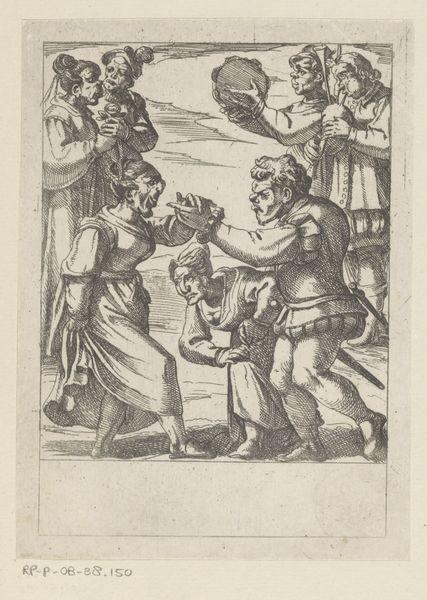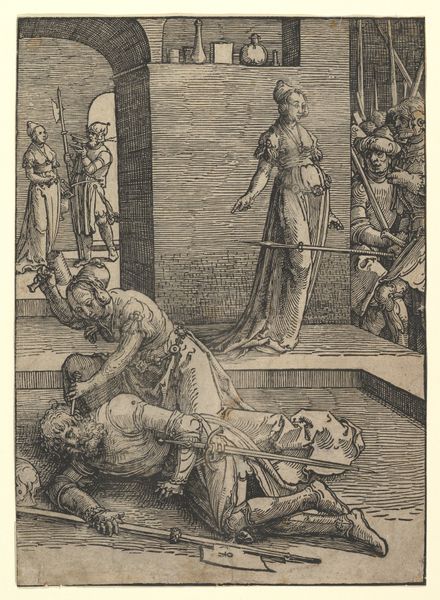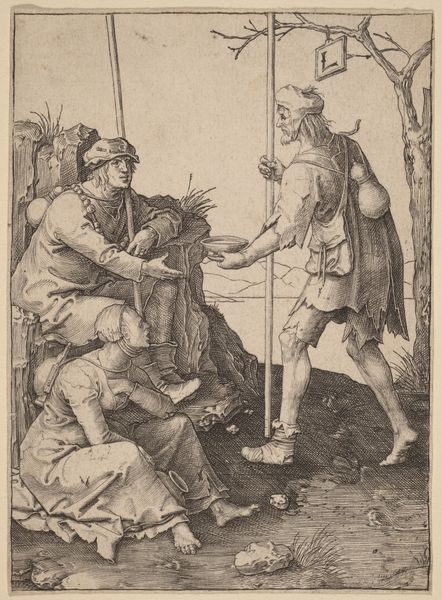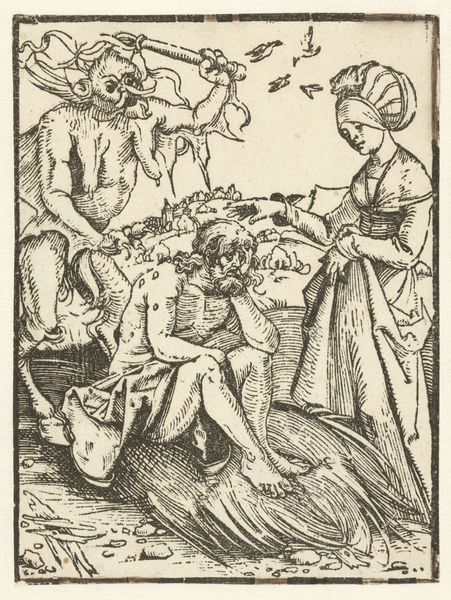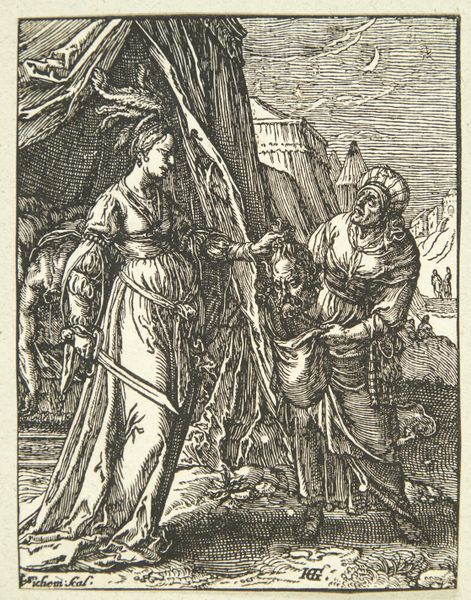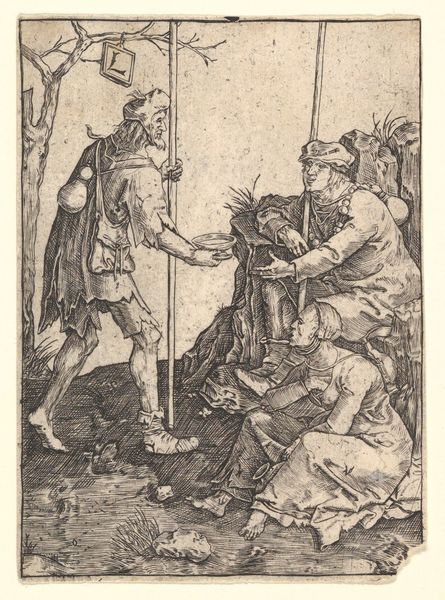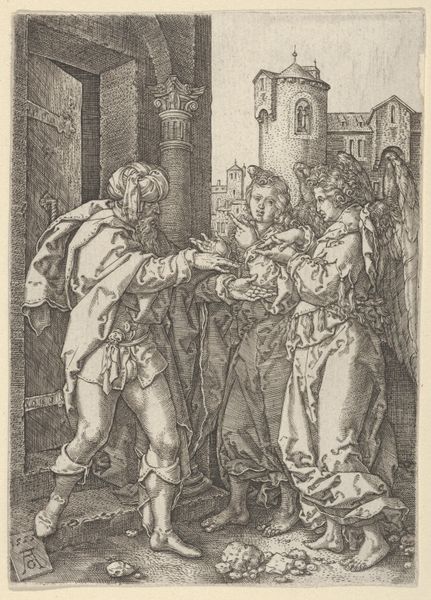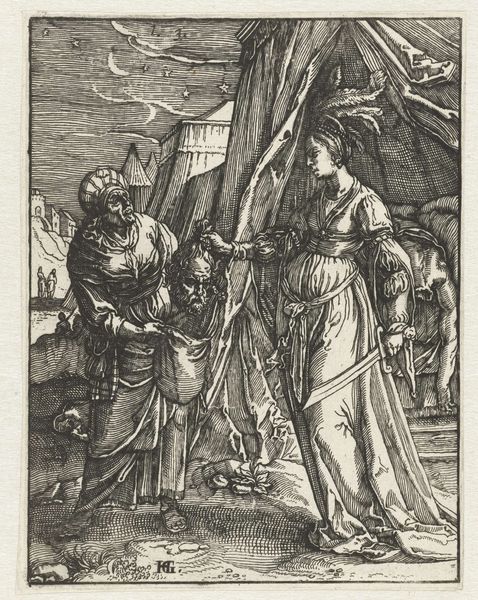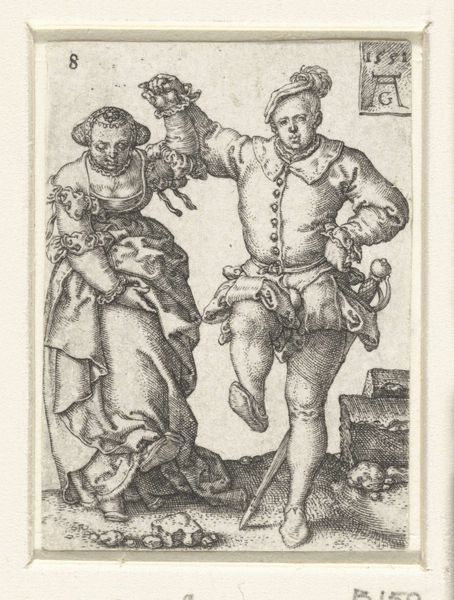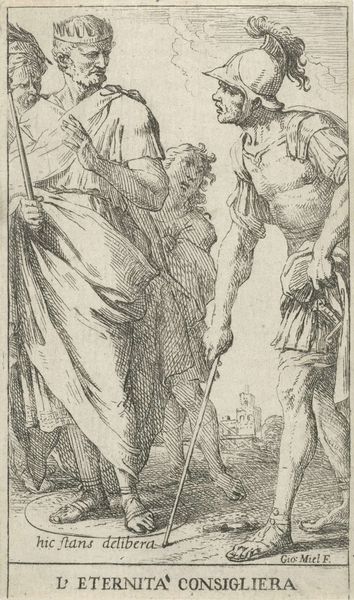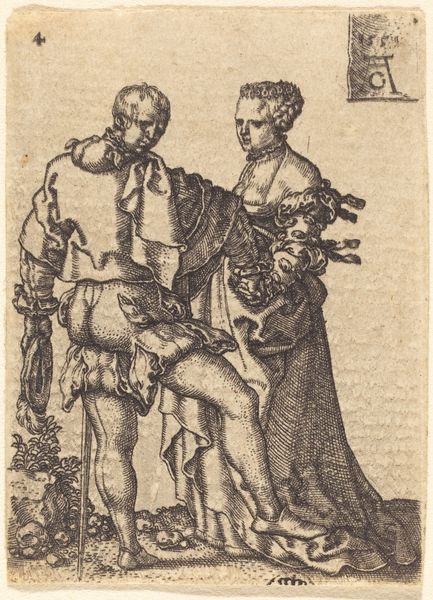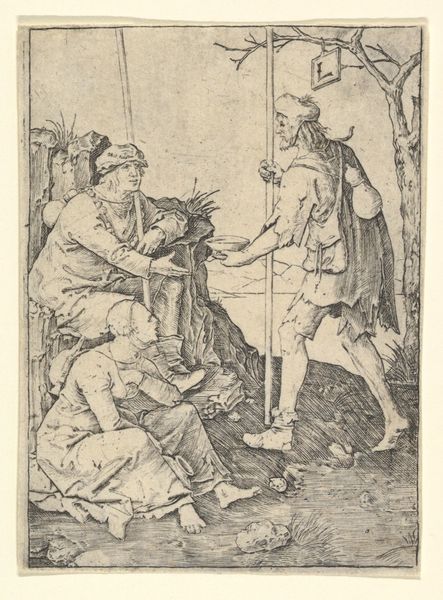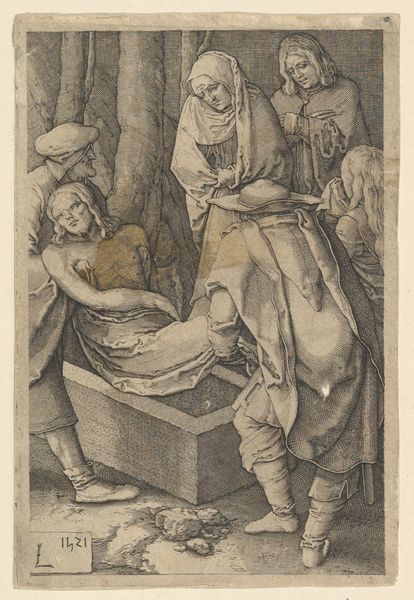
print, engraving
#
toned paper
#
light pencil work
# print
#
pencil sketch
#
sketch book
#
figuration
#
personal sketchbook
#
pen-ink sketch
#
sketchbook drawing
#
pencil work
#
history-painting
#
storyboard and sketchbook work
#
northern-renaissance
#
sketchbook art
#
engraving
Dimensions: height 107 mm, width 94 mm
Copyright: Rijks Museum: Open Domain
Lucas van Leyden created this engraving of the beheading of John the Baptist in the Netherlands sometime in the early 16th century. The print depicts the moment that Salome receives the head of John the Baptist after he had been executed at the request of Salome’s mother, Herodias. John had spoken out against Herodias’ marriage to King Herod, which led to his imprisonment and eventual execution. Although van Leyden would have been working within the well-established visual tradition of Christian art, the rise of Protestantism during this period led many artists to question the role of religious imagery. In this print, van Leyden has presented the story of the beheading in a realistic and detailed style, which was typical of the Northern Renaissance. But he has also brought a critical eye to traditional religious imagery. Examining the context in which artworks are made allows us to appreciate the richness of their meaning, and to reflect on the values and beliefs of the societies that produced them. Historians often use primary source documents, such as letters, diaries, and financial records, to learn more about the lives of artists and their patrons, and about the social and cultural contexts in which they lived and worked.
Comments
No comments
Be the first to comment and join the conversation on the ultimate creative platform.
